LUMIAN COLLECTIVE
Engaging in the medium of photography
through conversation and exhibitions.
“I have all but killed myself for photography. My passion for it is greater than it has ever been.”
Alfred Steiglitz
The Lumian Collective
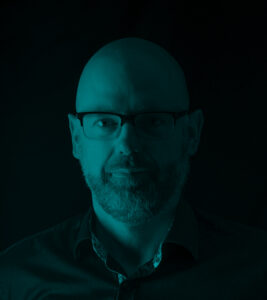
Andrew endeavors to show people the world the way they’ve never seen it before by using different perspectives and media. Most of their work is rooted in the abstract but with strong connection to the world we live in. Born in Plymouth, England, Andrew moved to Canada at a young age. After a short stay in Montreal, they moved to British Columbia spending most of the next 25 years primarily living in small towns in British Columbia.
With an artist and teacher mother, and an aerospace engineer father, Andrew was set on a path of technical artistry. Working as a graphic designer for large and small companies, as well as in the commercial printing industry in a technical capacity, Andrew started photography in 1999. He began with a manual Pentax Spotmatic film camera, progressing through different types of photography, and eventually to digital, while employing tilt-and shift-view camera techniques introduced over 100 years ago.
Extensive knowledge of colour management and printing helps Andrew take extraordinary images and turn them into striking prints, while the technical and artistic nature of photography fit perfectly with the traits passed down from his parents.
In conjunction with photography, Andrew also works in more traditional art mediums like oil, encaustic and acrylic; he also combines photography with recycled foils and acrylic mixed media, and develops alternative print processes.
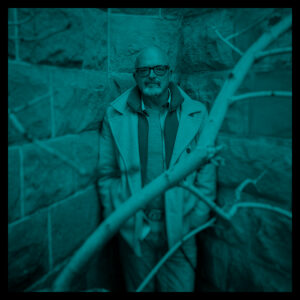
Growing up in a small rural town, regular trips to the “big city” and sitting on a street corner bench with his dad watching the world go by had a profound influence on Greg’s life as an observer of everything.
Certain illicit substances of the ‘70s provided an escape, and later a profound influence on his work, from the mundane existence of a teenager in a rural prairie town. Thus Greg’s personal work tends to be either stark black and white or highly saturated colour imagery.
Greg’s imagery tends to harken to bygone days whether it be people, buildings or still life. Although nothing is off limits from his lens. Of late, he has found a burning desire to document our world as it transitions from one of beauty into something far less, asking, ‘what have we done?’ Photography has taken him to four continents, with more in his plans. His love of the people of the “third world” has meant many trips to Mexico, El Salvador and Guatemala. The people there draw him back. His need to help them re-claim their way of life from the influence of multi-national corporations is a burning desire.
Greg is represented by a stock agency and a pair of assignment services. His other passion is mentoring aspiring photographers, fulfilled through his role teaching Photojournalism for over 15 years. Greg is an editorial, commercial and fine art photographer, and a product of the ‘70s… in the words of Ian Dury, “Sex and drugs and rock and roll is all my brain and body need.”
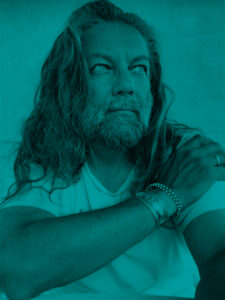
Greg Gerla is a commercial and fine art photographer.
His work evokes a strong mood with attention to craft and style. He’s represented by several stock agencies and his work has been published worldwide.
Greg has had several exhibitions of his fine art work locally and abroad. He was an instructor at The Alberta University of the Arts from 2004 o 2021, teaching in the Photography Department, Faculty of Visual Communications. Greg has served on the National Board of CAPIC (Canadian Association of Professional Image Creators) from 2002 to 2016. He served as president of the Prairie Chapter of CAPIC from 2004 to 2007. Greg was also a member of the board for the Exposure Photography Festival from 2010 to 2019.
Greg gets around. He has photographed his journeys from Moscow to Los Angeles, and from Cuba to Hungary. He’s continually inspired by what’s outside his door, or across the continent.

Richard Collens is a lifelong artist and photographer. He has an insatiable desire for adventure, road trips and finding beauty in natural surroundings: “making the journey the destination.” Although he has had a camera in his hand since he was young, he initially used his photographs as references for drawings and paintings that he was creating at the time. He started taking his photography more seriously later in life, focusing more on the quality, hygiene and artistry of his images.
Art and photography are passions that help Richard slow down the otherwise excessively fast pace of life. The art of painting and drawing allow Richard to slow down, he is in control and can create whatever comes to mind, however he would like it to appear, with whatever media he happens to choose. Photography, on the other hand, is more challenging because it requires more perception: looking deeper into the scenery, finding the moment in time and trying to find that spirit that lives within that scenery, something he is very much not in control of.
Richard strives to find that artistic image and spirit wherever he goes and hopes to capture it when he has his camera in his hand. “For me, the journey IS the destination. It’s amazing what you find off the beaten path: pristine wilderness, forgotten bits of a previous settlement and a good cross-section of life and natural history. I like to mix life and landscape, reclamation and regeneration, the defiance and the resilience of nature. The selections I make for my portfolio have a soul in them that speaks to me. Everything has a spirit within it, and if you can capture that soul in an image, it’s magic.”
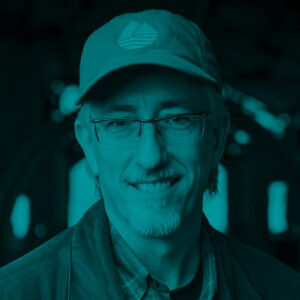
Royce is an artist working in the medium of photography. His work currently focuses on cultural landscapes, particularly of the Canadian and American West. Cultural landscape is found at the intersection between our human civilization and the land. Travelling this intersection, Royce finds many facets to explore.
Originally, Royce sought time within the landscape as solace from the forces in modern-city and professional-life that seemed increasingly to create stress and care, and didn’t provide a level of fulfillment or meaning that he realized he was missing. Royce wanted to escape from the press of the city back to the landscape, searching for – if not wilderness – at least a respite from the built world. It became natural for Royce to explore with his camera.
It wasn’t long before Royce had to admit to himself that “wherever you go, there you are.” His very ability to reach places in the mountains or desert, on a Caribbean or Mediterranean island, even within a remote volcanic or glacial wilderness, meant that all of these places were touched by human culture as much as his backyard or the downtown core of Royce’s home city. Royce began to sharpen his photographic vision not to show the land as an absence or negation of human culture, but culture and the land as necessarily integrated components of life that we need to come to terms with.
Now, Royce presents visual stories and intriguing details of both human and natural elements in the places he encounters. Through them, he hopes to open small windows into how we have inhabited the land in the past, the nature of our culture’s approach to the land now, and the shared future we hope to build within the land.
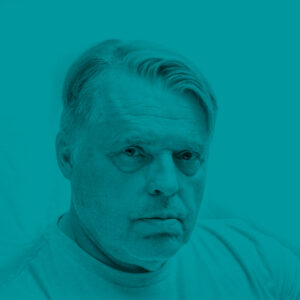
Steve has been photographing the urban and rural landscape since purchasing his first camera in the early 1970s. He is a respected photographer and teacher whose work is hung in many corporate offices and private residences – both nationally and internationally. He studied photography at the Alberta College of Art in the early 1980s and returned there as a sessional instructor in 2007. He has published two photography books: one on rural China (CHINA – Guangdong Province Portfolio) and another on the visual history of commercial real estate in Calgary, Alberta (Building on the Bow – Landmarks of Calgary Commercial Real Estate).
Says Steve: “I have always enjoyed the immersive aspect of photography and that is why I was originally drawn to large-format film. This format forced me to be slow and methodical because the use of a tripod was necessary and the expense (a single image cost around $4) caused me to be judicious about my compositions and exposures. I use digital capture now, but my approach is the same. I still use a tripod and like to be “in the moment.” What appeals to me about digital photography is the precision and control it provides while in the field, and the post-processing possibilities are enormous.”
For Steve, photographic art is about the vision of the photographer and the final presentation of his or her images. He says: “Nothing is more gratifying than standing in front of a finely visioned, well-printed and beautifully framed photographic print ,and being transported by that image.”
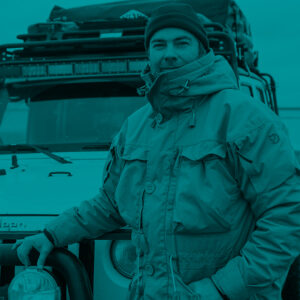
Visti was born in Penang, Malaysia, grew up in Western Canada and has made Calgary, Alberta home since the early ‘80s. Throughout his life, Visti has worked and played in the outdoors building a great appreciation for the world around him while overlanding, backpacking, fly fishing, as an instructor and mechanic in the cycling industry, and as a traveller.
Visti’s photographic path started when flipping through his dad’s photos and listening to the stories of his travels. He dabbled in photography in his younger years, and got his feet wet, literally, in underwater photography while reaching the certification of a NAUI Dive Master. Visti’s first camera was a Canon AE-1. His photography took off when he spent a summer surrounded by the intense splendours of the natural world in Yellowstone National Park working as a park archaeologist. Within a year, Visti fell in love with medium-format, black-and-white photography. From there, he moved into large format and a love for the darkroom.
Visti’s work is a mix of natural landscape, the industrial scape, and the built environment. His work has been printed in numerous publications and displayed in many galleries over the years. His largest and most recent project was in Japan photographing Japanese blacksmiths and craftsmen across the country for a successful book project. It is through his travels that his curiosity of the world is reflected in his work. Visti has a broad visual interest where he is continually seeking unique experiences, all the while refining, evolving, and improving his view of the world through the lens of his camera.
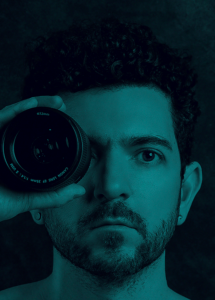
Felipe Jasso is a Mexican Canadian photographer who recently graduated from the Alberta University of the Arts. His work is influenced by the magical realism found in Latin literature, surrealism, and symbolism. He investigates the subconscious, memory and his inner desires. Jasso’s photography uses symbolism and a complex tableaux; he brings to the forefront fragments of his experiences as an immigrant, a queer artist, and his negotiations with the Canadian landscape.
Jasso expresses that he finds himself trapped in the images that he makes, between the colorful Mexican culture and the restrained and frigid Canadian scenes. His work shows his preoccupations with his experiences of displacement, isolation and his inner yearnings. However, for Jasso it is important to illustrate beauty and to show a positive outcome in his photographs, even when he touches on subjects that imply melancholy, nostalgia, or death. Jasso learned that in Mexican culture laughter is a reaction to tragedy; this can be seen in the Day of the Dead tradition. This juxtaposition is very unique from other cultures, and Jasso expresses his enjoinment to his heritage using the same logic in his work. www.felipejasso.com
